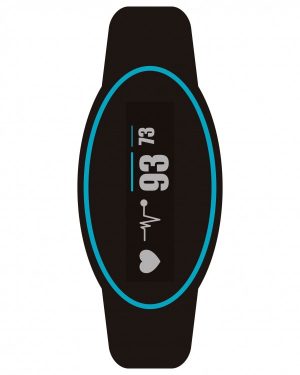 Wearable biosensors sound like some futuristic healthcare device, but they’ve actually been around for decades in the form of insulin pumps, Holter monitors and pulse oximeters. We’re only getting better at making technological advances in the world of healthcare, and a new set of wearables may greatly impact the industry in the coming years.
Wearable biosensors sound like some futuristic healthcare device, but they’ve actually been around for decades in the form of insulin pumps, Holter monitors and pulse oximeters. We’re only getting better at making technological advances in the world of healthcare, and a new set of wearables may greatly impact the industry in the coming years.
Back in 2010 the global healthcare market for wearable biosensors was estimated to be at $15.4 billion, but new figures suggest that number has risen in the past six years and it will continue to grow by an expected $7.7 billion annually in the future. So let’s take a look at some of the wearable and non-wearable biosensor devices that may soon make an appearance in a hospital room or on a patient in the near future.
Wearable Biosensors To Watch For
Sensiotec Virtual Medical Assistant – This device gives us a first-hand look at the future of patient care. The device can be positioned under a hospital patient’s mattress and detect a number of vitals, like heart rate and respiratory rate, and it can also detect if the patient moves or if they leave their bed, all without the patient needing to be attached to wires or other objects. These devices will help ensure vital signs are monitored, that patients move to avoid pressure ulcers, and to prevent patients from leaving their beds and wandering off.
Healthpatch – Healthpatch is a wearable biosensor that can track many more variables, like a single lead ECG, patient positioning, sleep quality, respiratory rate, heart rate variability, walking gait, body temperature, energy expenditure and more using a sophisticated algorithm.
FreeStyle Libre Flash – This biosensor is helping diabetics manage their condition without the need to prick their finger. FreeStyle Libre Flash is a bloodless glucose monitoring system that works by inserting a tiny sensing filament under the skin.
Respiratory Aids – This unnamed wearable device out of North Carolina State University works by analyzing wheezing in patients with respiratory problems. The device analyzes respiratory sounds, breathing pitch, and air intake volume.
“One of the most difficult parts of practicing medicine is the gap between the patient in the office and adopting [the physician’s] recommendations,” said Amy Baxter, MD, the CEO for MMJ Labs, a company that develops non-invasive analgesic devices. “The chasm between science and action… Adding smart technology to connect time of use, repetitions, and coaching reminders is the next wave of wearable tech. It will become standard, both in medications and physical interventions.”
We’ll keep an eye on these devices and other intriguing options as the future of medicine continues to grow.